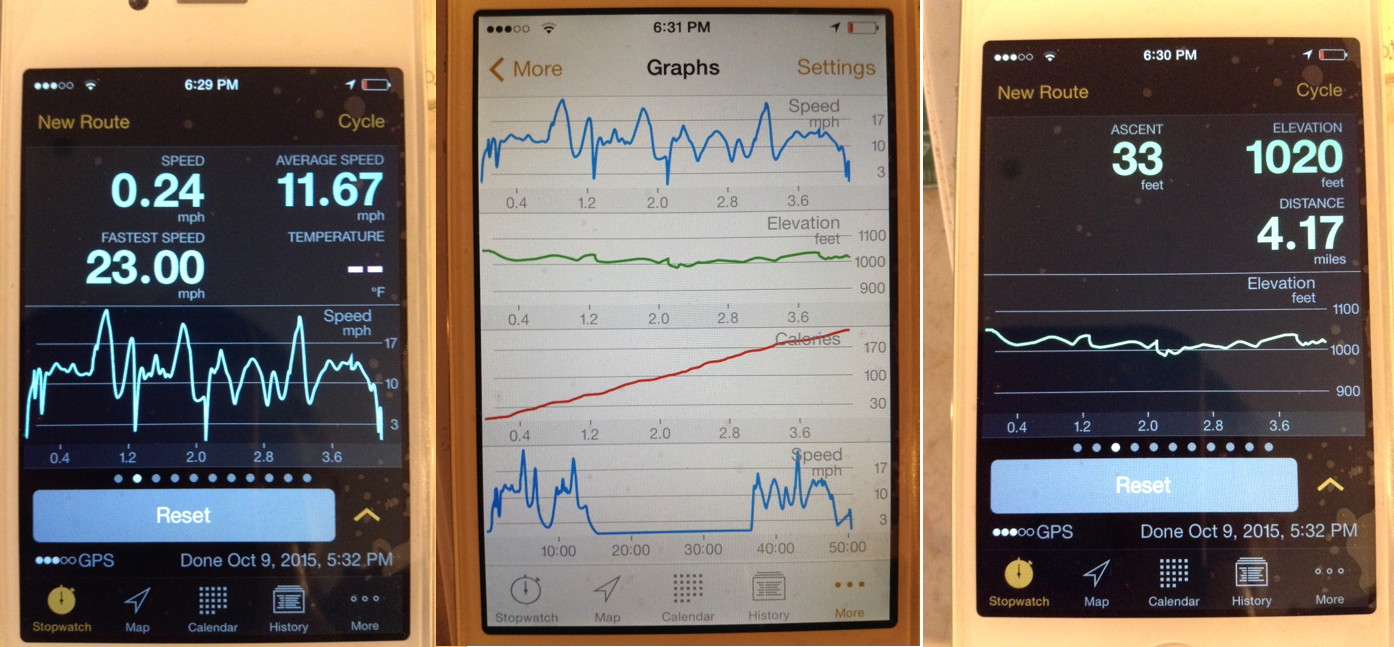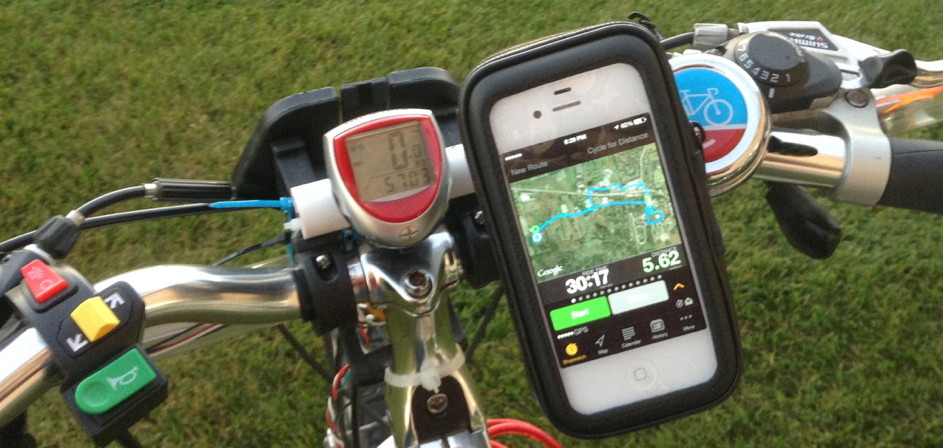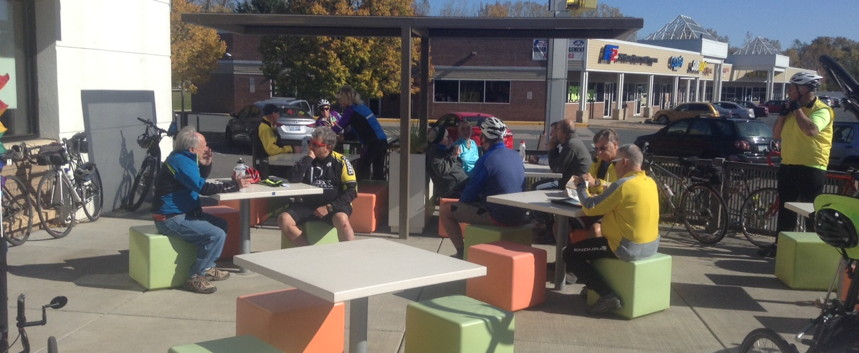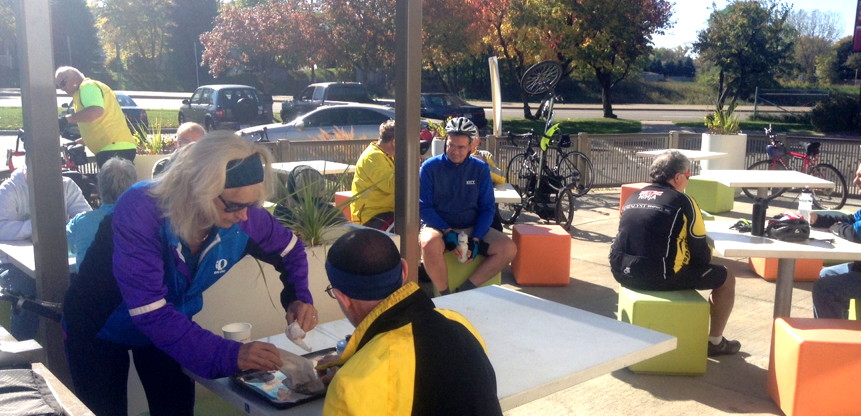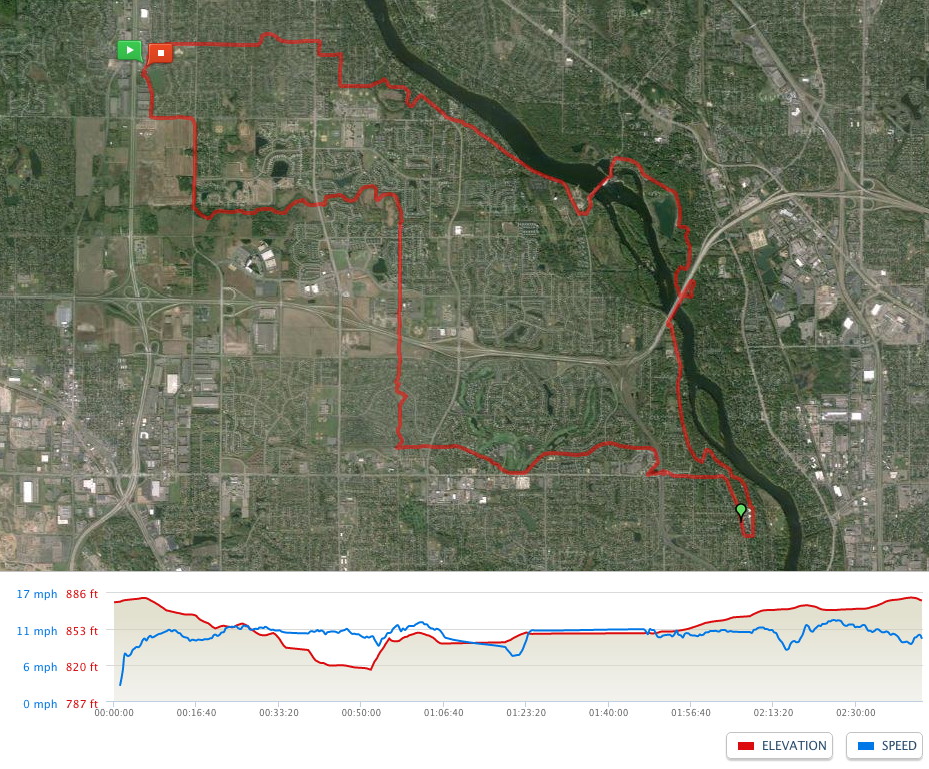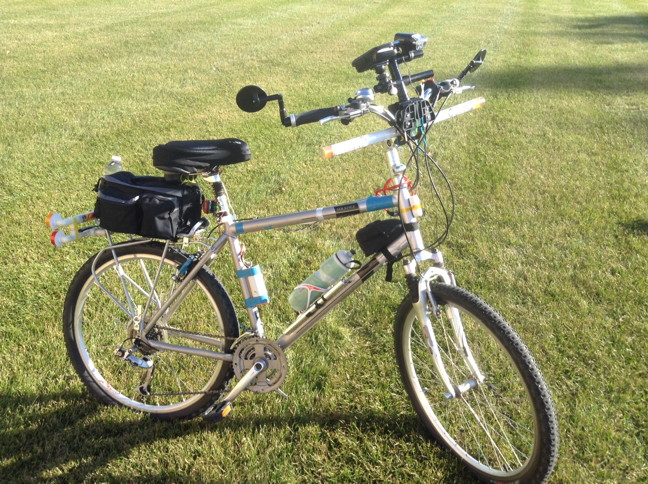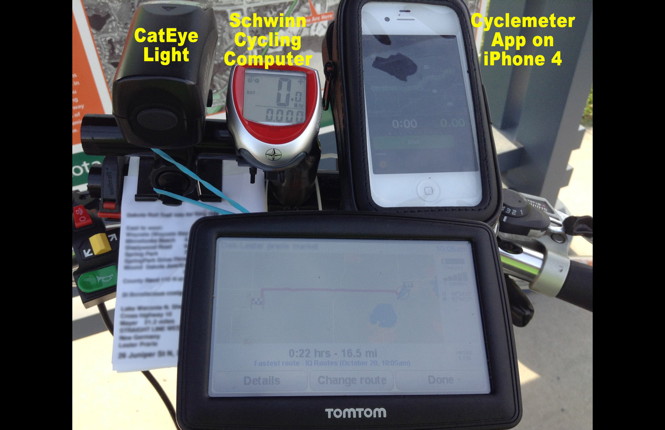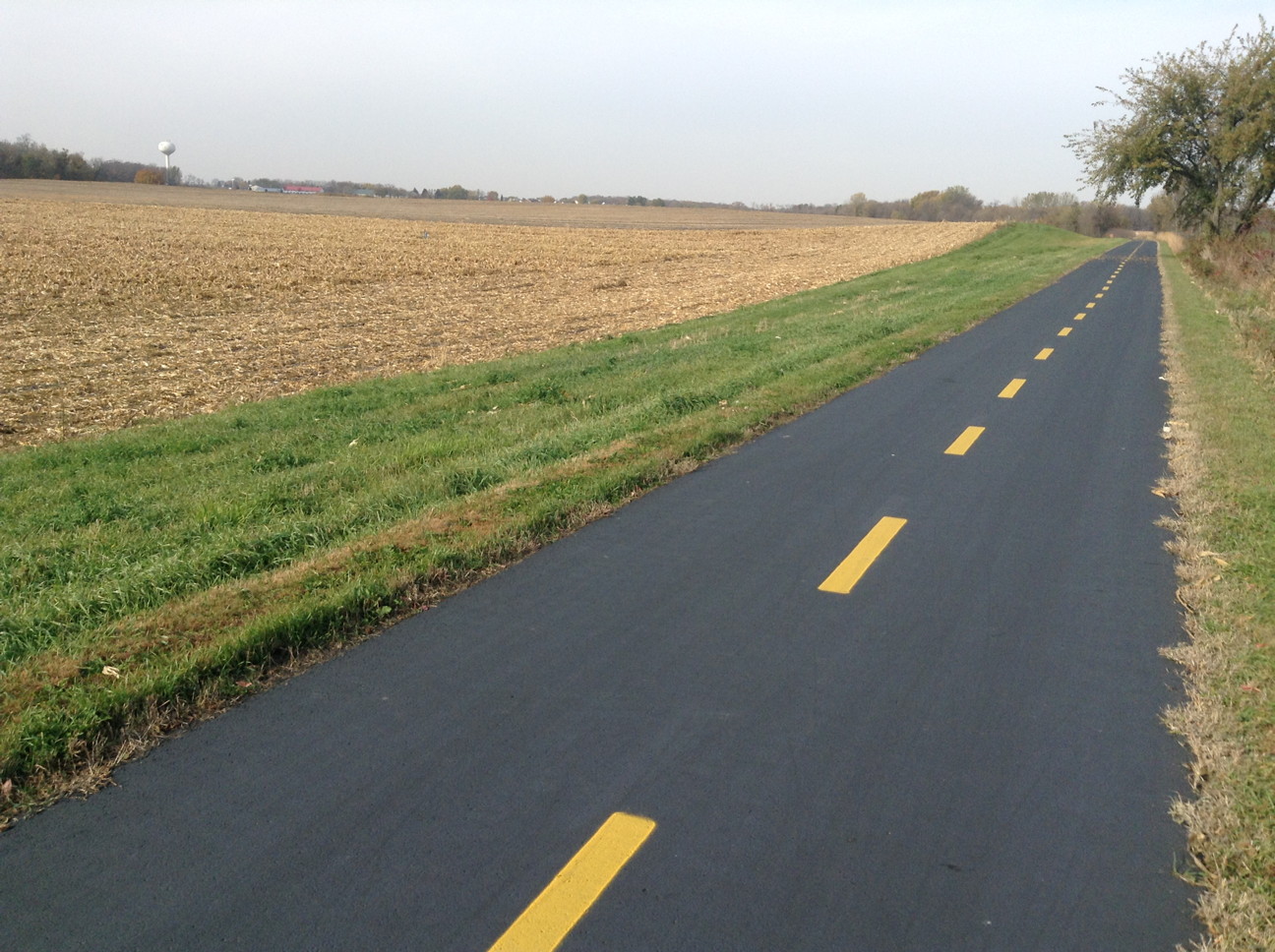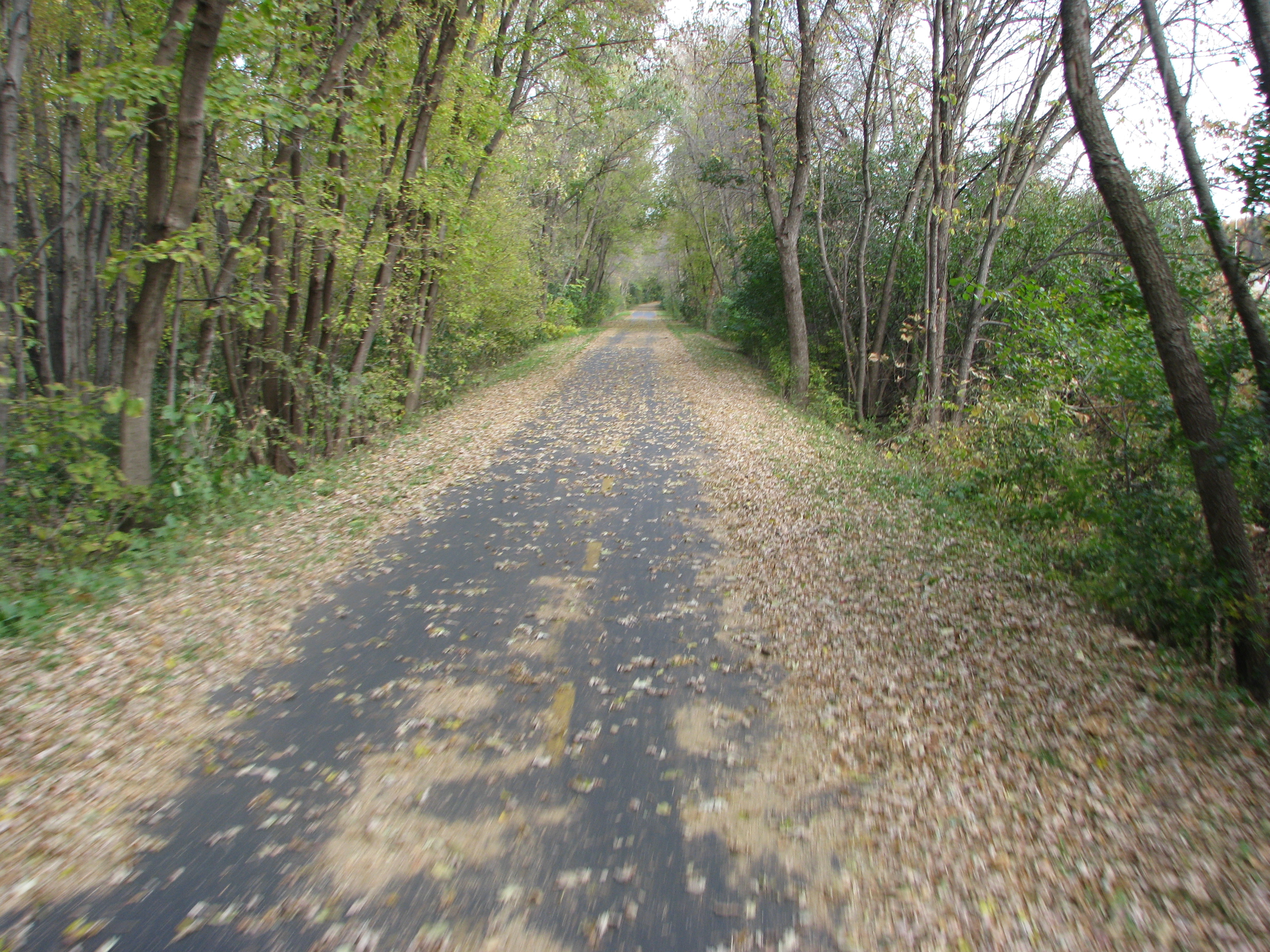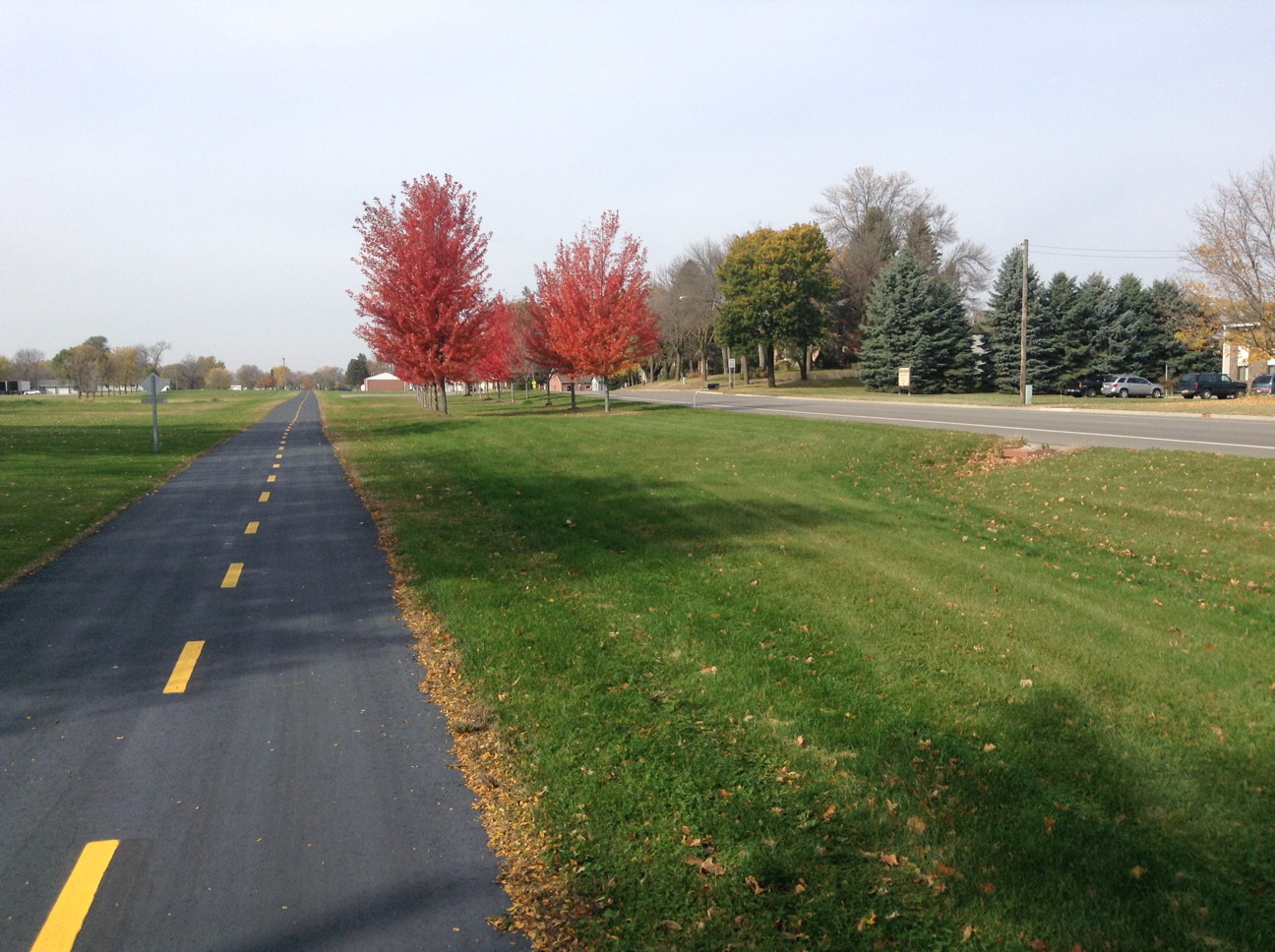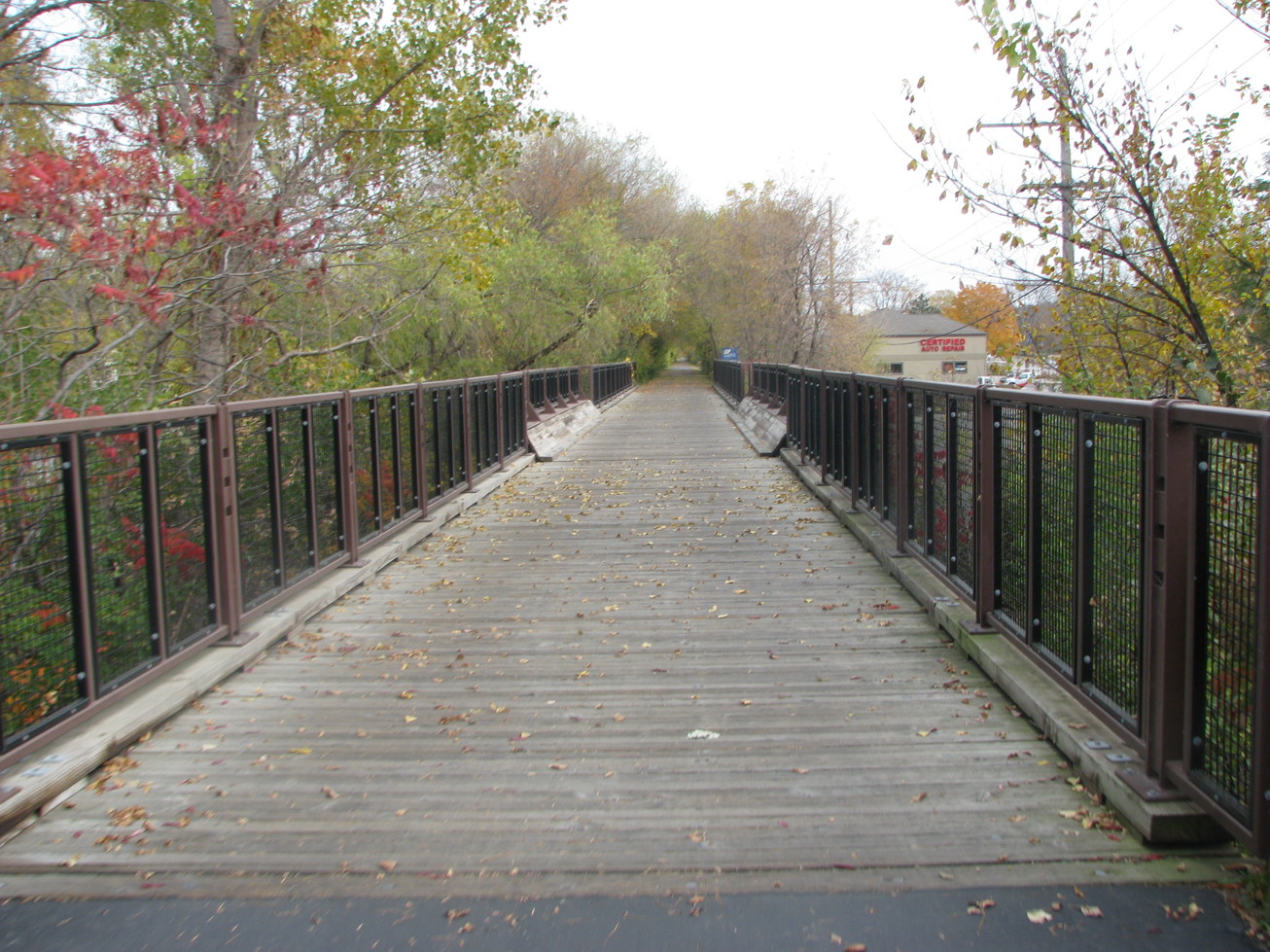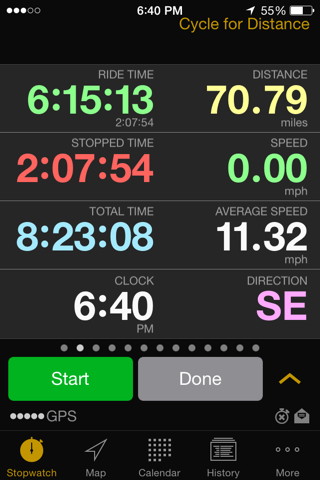Got in some more "C" group rides Wednesday, Thursday, and today (Sunday). Today's ride had a different group leader. She missed a turn but rather than stop fast, once she realized it she yelled for everyone else to turn left, as she safely slowed down and gave a couple of riders behind her the opportunity to slow too as they had all missed the turn. So what I'm saying is, that was handled just right given the situation, different from the other day when the group leader too-quickly stopped at a turn on a narrow trail, no warning, because he was not sure which way to go and there was a close call of a barely avoided accordian collision of several riders as a result.
Anyway, Thursday was a really nice new trail. Not a bunch of trail & road segments on a mostly looping course like the other group rides (those are fun, simply this was the first that was a ride on one single trail that was mostly in the same general direction) . It is on an old railroad line, but unlike another railroad based trail that does not have much of the paved trail on the original bed, this trail is about 90% on the old railbed. Nicely paved. And, VERY flat! Not pool-table flat, but the flattest I've ridden. And nice views. Rode a bit over 14 miles down it, and back, for over 28 miles. Whenever I want to try for a super-long (for me) one day record ride, this will probably be the trail I use. Actually, we were not going to do an exact ride back the same way, were going to check out something else and would have done maybe 35-ish miles. But the skies started to get overcast really quick and threatened rain, so that side trip was cut and we made it back in time (I finally have gotten a cheap compact rain poncho to add to the bike gear, for the inevitable).
I keep learning new things… sometimes dumb mistakes or inexperience. So, when I was a kid, I inflated the tires….. when they felt really low (and then there was.... the kaboom incident). I had not checked the tire pressures since I got the bike and inflated them 6 weeks ago. Before Thursday's ride, someone pumped up their tires, and that reminded me, yet again, that I needed to check the tires on mine (Kept thinking of that mid-ride but forgetting after). Saturday I finally did, 40 PSI for the back and 35 for the front! The tires are rated 40 to 65 PSI. I didn't want to push things, so I inflated them to 55 PSI (Had a tire blow in my face when I was 12 or so, using a gas station air hose, literally saw blackness for a few seconds as by terrible luck and coincidence the tire blew a blast of air right into my face and eyes. So I'm leery of inflating tires, wear glasses and face away).
Anyway, the bike rode more easily after that. I mentioned that today to one of the riders and he said he checks his every couple of days. Also he's riding on 1" wide tires and is a bit overweight, as a consequence he over-inflates his by an extra 5-10 PSI above the rating.
And now for the latest piece of "clown equipment" I've added. :wink: I really like the basic Schwinn bike computer I have, but have wanted to have additional capability. Tested out some cycling apps with my iPod Touch. But…. the Touch cannot do GPS, so there was not much else that those apps could do without GPS. Well, with a bluetooth sensor they could do speed and distance the same as the Schwinn, but there wasn't much point.
The one that I liked the most, and highly rated, was cyclemeter, for iPhones. Here is a link to a review by PC Magazine:
https://www.pcmag.com/article2/0,2817,2406203,00.asp
After trying out what I could on the iPod Touch (how easy it is to set up various data displays, and other features including maps and importing/exporting of files), I decided to go with that. I bought an iPhone. Now, I should point out that my real cell phone is an old flip-phone and I use a prepaid T-mobile account for 1000 minutes for under $100, which usually lasts a year. I only use that cell phone sparingly, using a landline or Skype for longer talks. So, I was not in the market to get an iPhone to use with a cellphone carrier and pay hundreds of bucks a year for the service and oh-by-the-way also have it double as a bike cycling computer. Indeed many who might use cycling apps do not do it from fear of busting their precious expensive cell phone.
In my research into cyclemeter, I realized that while it is definitely kept up to date with new features (and runs on iPhone 6), it really proved itself about when the iPhone 4 was first out. A lot of proven hardware, still available, that works with cyclemeter and iPhone 4's, at good prices. So, I went on eBay and got a refurbished iPhone 4 for $55 including shipping. Got it Friday, spent some time setting it up, mostly repeating what I'd learned with the Touch. I'm not using it with any carrier, so it's communicating by using WiFi wherever I can get free WiFi (and ideally prepare for a ride before leaving home, to pre-fetch map data of the planned riding areas).
Ordered a handlebar mount for it but won't get that for a few days. In the interim, modified another kind of cell phone holder so it could sit in the front basket. Did a ride to Target and back, and it recorded the ride very well. This composite of 3 images is from the ride, after getting to Target. The Schwinn and Cyclemeter agreed well.
Saturday, before leaving, I used MapMyRide to create a course to ride. About half of the course was in an area I'd not ridden before, for about a 10 mile loop. That went very well. I had it set up to give audio notifications at each mile, with average speed, distance, and some other info. Still need to tweak that. I used one ear bud in my right ear so I could hear it well, left my left ear open to hear traffic (have a bit of a hearing loss in my right ear so I'm not missing much sound traffic-wise).
Before leaving, to save battery power, I put the iPhone into airplane mode. I got 3/4 mile down the road before realizing the distance was zero and the location on the map had not moved. Oops, airplane mode disabled the GPS. So, airplane mode off, that fixed it. But lost 3/4 mile on the course recording. At one point the road became a dirt road.... did not expect that. Double-checked the route to make sure I had not gotten off course, it was correct.
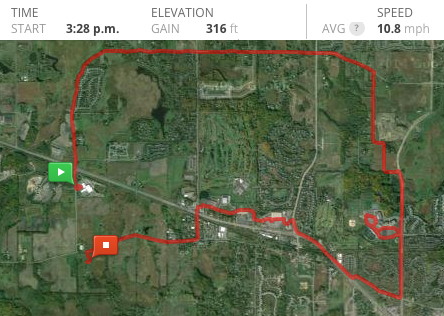
On the group ride today, no preplanned course, so I had it recording. Well, on the ride back, the group got dispersed. When the trail came out at 90 degrees to a road, I didn't know whether to go across on the other side of the road to the continuation of that trail, go left, or go right. The "sweeper" group leader in back, was with a straggler (hey, usually that's me! And often today it was me. But better in any case with the tires inflated more). I should have waited for them to get there. But then I saw one of the guys of the group, the one I'd been following most of the way, in fluorescent yellow shirt and dark shorts, riding off and away to the right about 200 yards away. So, I went to the right, to try to catch up with him. Rode at least half a mile, maybe 3/4 mile, and saw him go across a busy road, still going strong, and no sign of the primary group leader and two other riders that I expected would have waited at that intersection for everyone to catch up. Then I realized the sun angle, still high but angled enough to be able to tell I was riding north-ish, when it should have been more south-ish. Yep, by terrible coincidence, it was a totally different rider with the same colored clothing that I'd tried to follow.
UGH! So, I turned around and got back to where I had been when I rode the wrong way. Then made use of the cyclemeter's map trace of the recorded ride to find out where I needed to head to get back the way we had come. So, it was a REALLY good thing that I had the iPhone and Cyclemeter going (this is part of the reason why I had been using a Garmin Etrex Summit hiking GPS, to help get back if lost). Finally got back, and we all discussed what had happened. I feel it was more my mistake than anyone else's, I should have waited for the sweeper ride leader to come up with the straggler. But I also suspect on future rides the front leader will stop more often when the group is stretched out and there is no "obvious" direction to go at a major crossing or turning point (they had gone left, but down a slight hill that blocked my view of them by that time). One of them tried to call my cell phone…… which I had forgotten to take (left it in my pants in my car, as I had changed to wearing sport shorts ).
One other option I do have for communication is that in a real emergency (if my cell phone was forgotten or dead), that carrier-less phones should be able to call 911 (required by law). I also found out that I could make collect calls, I tested that the other night by calling my cell phone, and indeed it rang (I did not answer since I only wanted to find out if it rang). It would be an expensive call (roaming and collect) but worth it for problems not suitable for 911.
So, I'm pleased at how well that has worked out. I still need to learn a few things. Such as how in a similar situation where I'm not using a pre-programmed course, but simply starting from a spot and recording, how to get it to actively navigate me back to the starting point rather than looking at the outward path as a map to follow back. I plan to get a speed/cadence sensor set that works with iPhone 4, for under $20. But I won't replace the Schwinn computer, that will remain my primary indicator for basic speed/distance during the ride.
- George Gassaway
Examples of some data:




